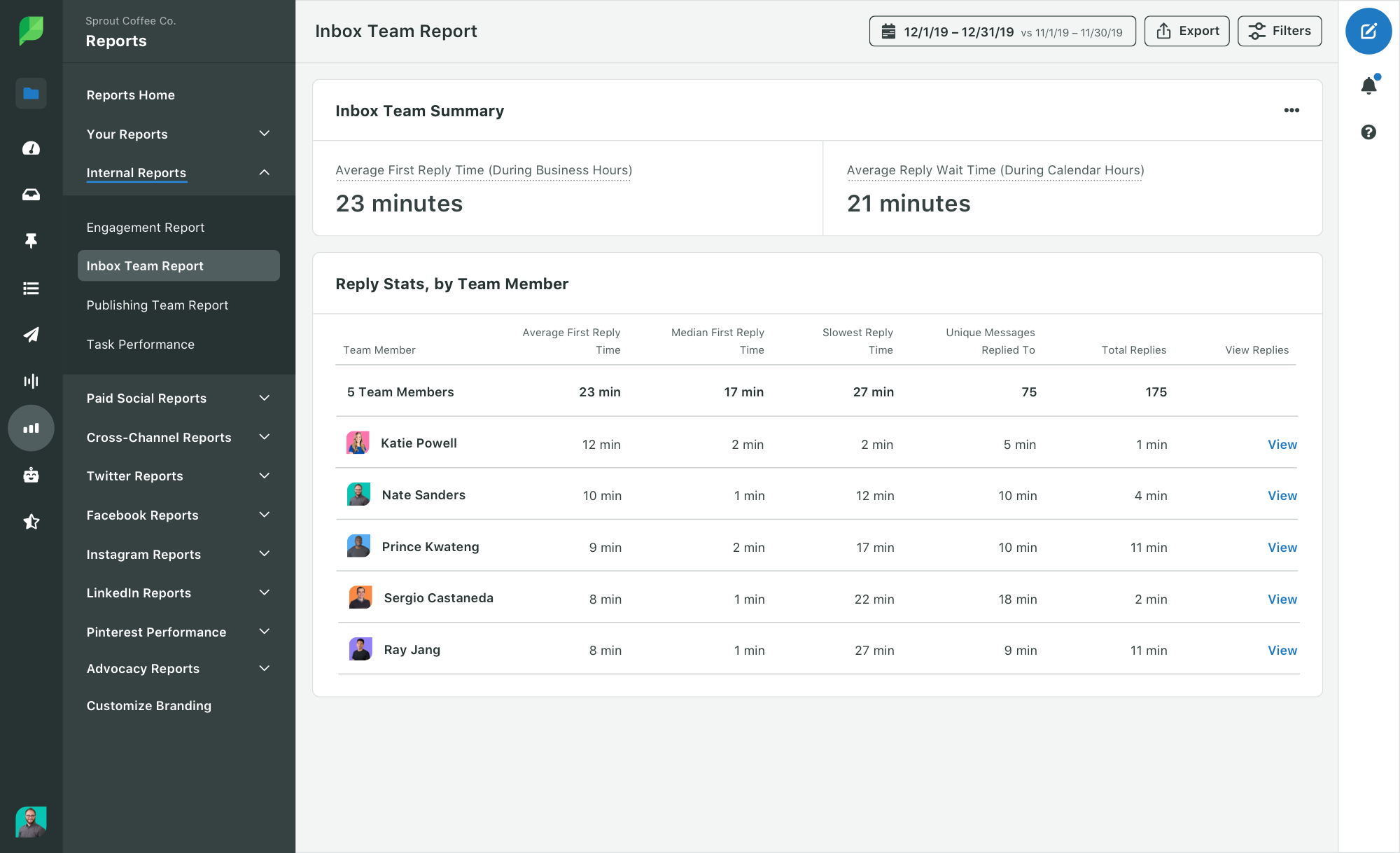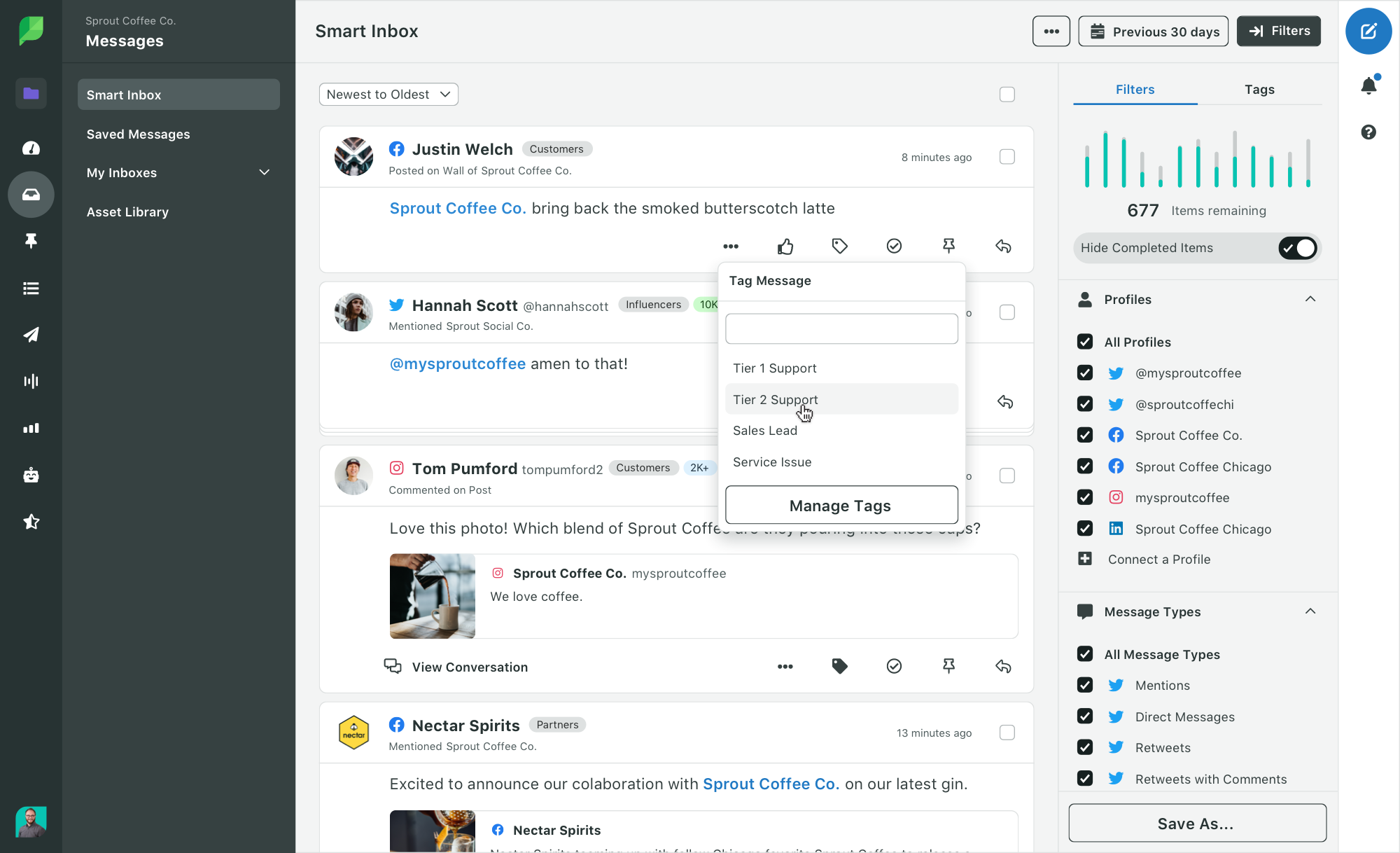The boom of social media as a customer care channel is unprecedented.
Timely and transparent, social is a prime place for consumers to seek out answers and solutions.
But many brands still struggle with social customer service.
Specifically, the volume of messages coming from social media is often overwhelming. Serious issues fall through the cracks, resulting in angry customers, negative press and lost business.
Listen: you can’t afford to treat customer care as secondary. You need to address pressing issues in a speedy, thoughtful manner without overwhelming your customer support reps.
That’s where your escalation management strategy comes into play.
What is escalation management, anyway?
Escalation management is the process of prioritizing customer service concerns, ranking issues based on severity and ensuring that they’re addressed by the right reps (in the appropriate order).
Food for thought: companies have seen a staggering 66% increase in service requests from digital channels in the past three years. Couple that with the fact that social service requests are just as legitimate to modern customers as phone calls or in-person conversations.
This speaks to not only the importance of separating your requests into tiers but also delegating responses to the right people.
Escalation management goes hand in hand with greater customer retention. Mastering it means maintaining a timely social media response time while also empowering your best-equipped reps to handle their respective tickets. The end result is more satisfied customers and positive sentiment via social.
How to handle escalation management through social media
Below we’ve broken the steps to put together a customer service escalation process as it pertains to social media.
1. Prioritize your customers’ most pressing issues
First thing’s first: you need to differentiate between tasks that deserve your immediate attention versus issues that can wait.
There are some instances where a saved response won’t cut it. Also, failure to respond quickly could cost you customers.
For example, there’s a huge difference between deleting a troll comment and de-escalating a social media meltdown from your biggest client. Below are some examples of priority issues when it comes to escalation management.
Major product and service problems
Arguably the most important issues related to escalation management involve your customers’ finances and understandably so. Some examples might be:
- Unexpected charges or fees (such as double billing)
- Service interruptions or outages
- Undelivered or unusable products or services (damaged products, broken links)
These types of issues that can snowball from a single customer issue to a full-blown call-out if left unanswered.
And again, speed counts. Consider that two-thirds of people expect a same-day response from brands on social media. Especially when it comes to massive customer inconveniences, you can’t let those bad feelings linger. These are situations where you need to own up and suggest next steps ASAP.
Inflammatory comments and call-outs
We understand: navigating call-out culture is tricky.
Sometimes it’s difficult to decipher legitimate call-outs from minor complaints or trolls.
However, if you receive a flood of negative mentions from industry players, influencers and/or verified accounts, damage control can’t wait. Whether it be a clarification or apology, brands have to find a balance between timely and thoughtful responses to keep the situation from getting worse.
This is yet another situation where the customer care rep that makes the response really matters. Leave delicate situations like these in the hands of people who understand your brand voice and values.
Opportunities to close eager customers
Not every situation related to escalation management is necessarily negative.
For example, let’s say that someone via social is shopping around products and asks about a feature or a demo. The longer you wait to set up a demo or potential meeting off of social media, the more likely they are to look elsewhere or potentially bounce to a competitor.
The takeaway? For good and bad situations alike, you need to emphasize proactive service that’s in the hand of the right reps.
Doing so is an ongoing process that requires you to both learn your social media specialists’ or customer care reps’ strengths and continuously improve your response times. Tools like Sprout Social encourage you to do both by keeping tabs on your reps’ customer interactions.

2. Determine your levels of service (and the reps responsible for them)
Simply put, you need to establish a social media policy that prioritizes your service tasks at different levels. For example:
- Tier 1 support deals with common questions, many of which could be answered by a saved reply or knowledge base.
- Tier 2 support deals with individual issues that require a personalized response but aren’t necessarily pressing.
- Tier 3 support deals with the high-priority problems that we discussed above (such as billing problems, outages and so on).
And for each level of customer escalation, you can assign different reps (think: junior versus senior reps)
How this sort of policy works in practice varies from business to business. Either way, the concept is simple enough: issues are ranked by severity and are only dealt with by the proper personnel.
For the sake of organization, consider coupling your escalation management strategy with permissions and approvals. Doing so not only keeps your reps’ tasks organized and creates a sense of accountability, but also ensures that the right tasks go to the right people.
Below is an example of escalation management using Sprout, serving as an all-in-one place for reps to tag issues by tier, go back-and-forth via comments and reply to customers without leaving the platform.

3. Create a process for assessing and responding to customers
Now that you’ve figured out what your priority problems are and who should address them, what about the actual process of responding?
Escalation management is largely situational. Companies can’t treat all customers identically, nor should they rely on one-size-fits-all responses to complex issues.
That said, you should absolutely streamline the process of responding to customers. Below is a step-by-step example of a customer escalation management process in action:
Step 1. The social marketing team vets any and all inbound messages. Anything deemed worthy of escalating is sent to support as a priority ticket.
Step 2. Social team members read their full conversation history with a user, as well as:
- The user’s previous seven days of tweets
- Their bio
- Relevant mentions and replies
The goal here is to gain literacy about who you may be interacting with and whether they have any ulterior motives (think: trolling, indirectly mentioning your brand or employees and so on).

Step 3. Use tagging to identify more severe incidents that may require review from another team. This could be any kind of aggressive or reportable content, messages about specific employees or issues with company conduct.
From here, messages and comments associated with internal tags can be directed to senior team members. Depending on the situation, a social manager might bounce the concern back with a suggestion or take the reins themselves.

Step 4. Over time, make sure to develop reply templates as well as internal tagging for common issues. This can help speed up your response time and likewise help newer reps with replies without totally templating them.

4. Train your reps to tackle issues before they escalate
Perhaps the best line of defense against escalating issues is making sure your reps are prepared for them.
Here are some key issues to focus on when it comes to escalation management:
Practice empathy
Modern social customer care is built around empathy and listening to people, not copy-and-pasting a canned response. Always put yourself in your customers’ shoes and make a point to reassure them.
Respect the chain of command
In short, reps should acknowledge which issues are in their wheelhouse and which aren’t. The clearer your reps’ roles and responsibilities are, the easier it is for them to hand off and address issues.
Be willing to collaborate with fellow reps
An open, collaborative culture is key to dealing with issues in a timely manner and ensuring that your reps maintain a good relationship with each other.
This is where tools like Sprout come in handy, allowing reps to go back-and-forth within a single platform and resolve issues without stepping on each others’ toes.

Do you have a plan for escalation management?
Sure, you shouldn’t assume the worst what-if scenarios for your service reps.
Even so, you need to be prepared.
Having an escalation management plan in place will make your reps’ lives easier and help you maintain more positive customer relationships at the same time. Doing so requires a conscious customer escalation process and you can’t afford to just “wing it.”
In that same vein, make sure to check out our guide to social media crisis management.
This post Escalation management: how to keep social customers happy originally appeared on Sprout Social.